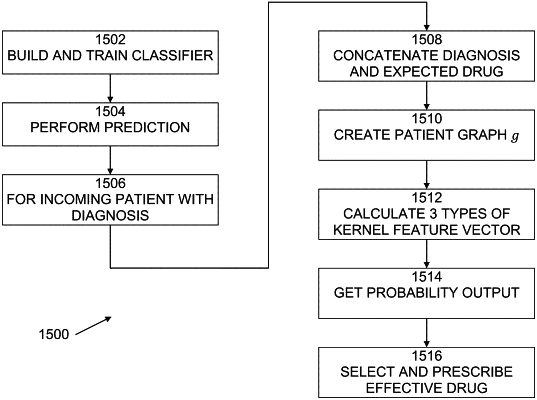| CPC G16H 50/20 (2018.01) [G06F 9/545 (2013.01); G06F 18/24 (2023.01); G06N 7/01 (2023.01); G16H 20/10 (2018.01); G16H 50/80 (2018.01); G16H 70/40 (2018.01)] | 27 Claims |

|
1. A method of computing a probable drug efficacy implemented in a computer system comprising a processor, memory accessible by the processor and storing computer program instructions and data, and computer program instructions to perform:
for each of a plurality of patients, generating and storing in the memory a graph, each graph comprising:
a plurality of nodes, each node representing a medical event of the patient,
a plurality of edges connecting nodes representing two consecutive medical events, each edge of the plurality of edges having a weight based on a time difference between the two consecutive medical events;
capturing, using the processor, a plurality of features from each graph stored in the memory by:
transforming each graph to a shortest path graph;
generating a temporal topological kernel by recursively calculating similarity among temporal ordering on a plurality of groups of nodes; and
generating a temporal substructure kernel on edges connecting nodes in each group of nodes;
training, using a multiple graph kernel fusion (MGKF) framework, a classifier model using a plurality of the captured features of each graph;
applying the classifier model to determine a probability that a drug or treatment will be effective for a particular patient; and
determining, using the processor, a drug or treatment to be prescribed to the particular patient based on the determined probability.
|